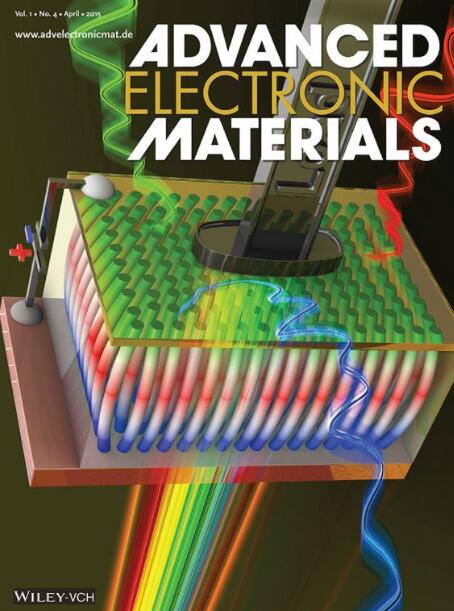基于MoTe2 2D材料的CMOS纳米电子学无掺杂双极场效应晶体管
IF 5.3
2区 材料科学
Q2 MATERIALS SCIENCE, MULTIDISCIPLINARY
引用次数: 0
摘要
实验和理论研究了双极性MoTe2场效应晶体管(fet)在不同温度条件下,整个MoTe2通道暴露于环境空气中的电荷输运特性。这些场效应管表现出稳定的输运行为,无需复杂的表面封装。这一发现意义重大,因为它消除了外部和有意的n型和p型掺杂的需要,解决了将2D材料集成到互补金属氧化物半导体(CMOS)技术中的主要挑战。第一原理模拟提供了对Ni/MoTe2界面的电子特性和能带对准的见解,揭示了观测到的双极性输运响应背后的基本机制。通过温度相关的电特性,研究了滞后、阈值电压位移和载流子迁移率变化,从而更深入地了解了MoTe2/SiO2界面的相互作用。结果表明,在高温下,电荷捕获和声子散射导致载流子迁移率和ON/OFF电流比降低,这主要是由界面相互作用而不是材料杂质驱动的。重要的是,即使直接暴露在环境条件下,这些器件也能实现稳定的性能,证明了它们在没有复杂钝化技术的情况下的稳健性。进一步优化钝化和封装策略可以提高性能,包括载流子迁移率的提高。这项工作证明了基于MoTe2的场效应管的潜力,为下一代CMOS纳米电子学提供了一条有前途的途径。本文章由计算机程序翻译,如有差异,请以英文原文为准。
Dopingless Ambipolar Field‐Effect Transistors Based on MoTe2 2D Material for CMOS Nanoelectronics
The charge transport characteristics of ambipolar MoTe2 field‐effect transistors (FETs), with the entire MoTe2 channel exposed to ambient air, across varying temperature conditions, are experimentally and theoretically investigated. These FETs exhibit stable transport behavior without the need for complex surface encapsulation. This finding is significant as it eliminates the need for external and intentional n‐type and p‐type doping, addressing a major challenge in integrating 2D materials into complementary metal‐oxide‐semiconductor (CMOS) technology. The first‐principles simulations provide insights into the electronic properties and band alignment at the Ni/MoTe2 interface, revealing the fundamental mechanism behind the observed ambipolar transport response. Through temperature‐dependent electrical characterization, hysteresis, threshold voltage shifts, and carrier mobility variations are investigated, providing a deeper understanding of MoTe2 /SiO2 interface interactions. The results indicate that at elevated temperatures, charge trapping and phonon scattering lead to reduced carrier mobility and ON/OFF current ratio, which are primarily driven by interface interactions rather than material impurities. Importantly, the devices achieve stable performance despite direct exposure to ambient conditions, demonstrating their robustness without complex passivation techniques. Further optimization of passivation and encapsulation strategies can enhance performance, including carrier mobility improvement. This work demonstrates the potential of FETs based on MoTe2 , offering a promising pathway for next‐generation CMOS nanoelectronics.
求助全文
通过发布文献求助,成功后即可免费获取论文全文。
去求助
来源期刊

Advanced Electronic Materials
NANOSCIENCE & NANOTECHNOLOGYMATERIALS SCIE-MATERIALS SCIENCE, MULTIDISCIPLINARY
CiteScore
11.00
自引率
3.20%
发文量
433
期刊介绍:
Advanced Electronic Materials is an interdisciplinary forum for peer-reviewed, high-quality, high-impact research in the fields of materials science, physics, and engineering of electronic and magnetic materials. It includes research on physics and physical properties of electronic and magnetic materials, spintronics, electronics, device physics and engineering, micro- and nano-electromechanical systems, and organic electronics, in addition to fundamental research.
 求助内容:
求助内容: 应助结果提醒方式:
应助结果提醒方式:


